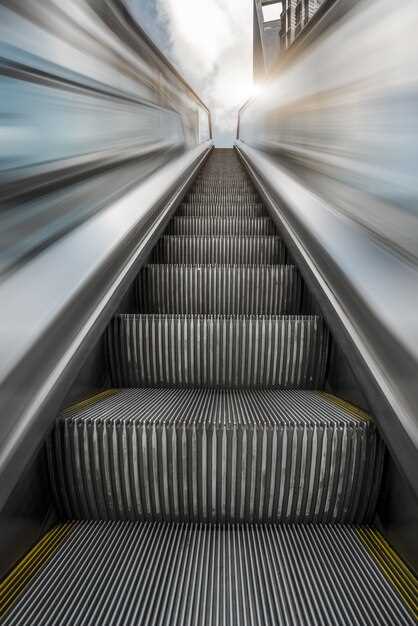
When it comes to automotive safety and performance, the significance of roll cages and chassis reinforcements cannot be overstated. These structural enhancements are essential not only for competitive motorsports but also for everyday vehicles. They provide crucial protection to drivers and passengers during collisions or rollovers, ensuring that the integrity of the vehicle remains intact.
A roll cage serves as a fortified framework inside a vehicle, designed to absorb and dissipate energy during an impact. This protective structure is typically made from high-strength materials, ensuring maximum durability. By reinforcing the chassis, automotive engineers can dramatically improve the vehicle’s ability to withstand extreme forces, safeguarding its occupants while maintaining performance capabilities.
In addition to enhancing safety, chassis reinforcements contribute to improved handling and stability. As a vehicle’s structure becomes more rigid, it responds more predictably to driver inputs and road conditions. This combination of safety and performance makes roll cages and reinforcements vital components for any serious racing enthusiast or those who prioritize safety in daily driving scenarios.
Maximizing Driver Safety with Roll Cage Design
The design of a roll cage plays a critical role in enhancing driver safety during motorsport events or high-performance driving. A well-engineered roll frame serves as a protective structure that absorbs and distributes impact forces in the event of an accident. By effectively managing these forces, the roll cage minimizes the risk of injury to the driver.
When constructing a roll cage, materials such as high-strength steel or chromoly tubing are often employed to maximize durability and resistance against deformation. The geometry of the roll cage is equally important; it should include appropriate cross-bracing and diagonal supports to provide increased rigidity. This design allows for a lower weight while maintaining the necessary strength to protect the occupant.
In addition to structural integrity, the placement of the roll cage within the vehicle frame is essential. A properly positioned cage ensures that the driver’s seating position is optimized for both comfort and safety. By maintaining a safe distance from the vehicle’s exterior, the roll cage helps to create a buffer zone that can absorb impacts and protect the driver during collisions.
Furthermore, attention should be given to the integration of safety equipment such as harnesses and helmets with the roll cage design. Harness mounts should be strategically located on the frame to prevent excessive movement during an accident, reducing the likelihood of injury to vital areas. The roll cage should also accommodate the installation of head and neck restraints, providing additional safety measures for the driver.
Overall, maximizing driver safety through roll cage design is an essential aspect of motorsport engineering. By focusing on the materials used, geometric design, and integration with safety equipment, engineers can create a robust frame that greatly diminishes the risk of injury, ensuring that drivers are well-protected in high-risk environments.
Understanding the Role of Chassis Reinforcements in Performance

Chassis reinforcements are critical components in enhancing the structural integrity and performance of vehicles, particularly in high-speed or competitive environments. The primary function of these reinforcements is to provide added strength to the frame, reducing flex and improving overall stability during dynamic driving conditions.
The frame serves as the backbone of a vehicle, supporting various systems, including the engine, suspension, and roll cage. When modifications are made to any of these systems, the structural integrity of the frame can be compromised. By implementing chassis reinforcements, such as additional tubing or reinforced brackets, the vehicle can maintain a rigid structure, allowing for more precise handling and increased responsiveness.
Another vital aspect of chassis reinforcements is their impact on safety. In high-performance scenarios, the likelihood of collisions increases, making it essential for vehicles to withstand significant forces. Reinforced frames can better distribute impact forces, thereby protecting occupants and critical vehicle components. This capability is particularly crucial in racing or off-road applications, where the risk of rollover exists, and the roll cage provides additional support in conjunction with the frame.
Performance improvements also extend to weight distribution. Strategically placed reinforcements can help maintain an optimal center of gravity, enhancing traction and cornering capabilities. Furthermore, a well-constructed frame minimizes the risk of fatigue over time, ensuring that the vehicle performs consistently over extended periods.
In conclusion, chassis reinforcements play a vital role in enhancing the performance and safety of vehicles. By strengthening the frame, they contribute to improved handling, stability, and crash protection, making them an essential consideration for any high-performance build or modification.
Comparing Material Options for Optimal Frame Durability

When it comes to constructing roll cages and chassis reinforcements, selecting the right materials is paramount for achieving optimal frame durability. Various materials offer distinct advantages and disadvantages that directly impact the performance and safety of the vehicle.
Steel is one of the most common choices for roll cages due to its high strength-to-weight ratio and affordability. Carbon steel, in particular, provides excellent toughness, while chromoly steel enhances strength and reduces weight. However, the rigidity of steel can lead to increased weight, which may affect overall vehicle performance.
Aluminum is another popular option, appreciated for its lightweight properties. An aluminum frame can significantly decrease the overall weight of the vehicle, enhancing speed and efficiency. However, while aluminum is resistant to corrosion, it lacks the same level of strength as steel, potentially compromising safety in high-impact scenarios.
Composite materials, including fiberglass and carbon fiber, are gaining attention for their unique properties. Carbon fiber, while expensive, offers exceptional strength while being substantially lighter than metals. This makes it an ideal choice for high-performance race cars. However, composites can be less resistant to impact, necessitating careful consideration of their application within a roll cage.
Ultimately, the choice of material for roll cages and frame reinforcements must align with specific performance requirements, vehicle use, and safety regulations. Evaluating the balance between weight, strength, and cost is crucial in ensuring that the frame provides adequate protection while enhancing overall vehicle dynamics.




